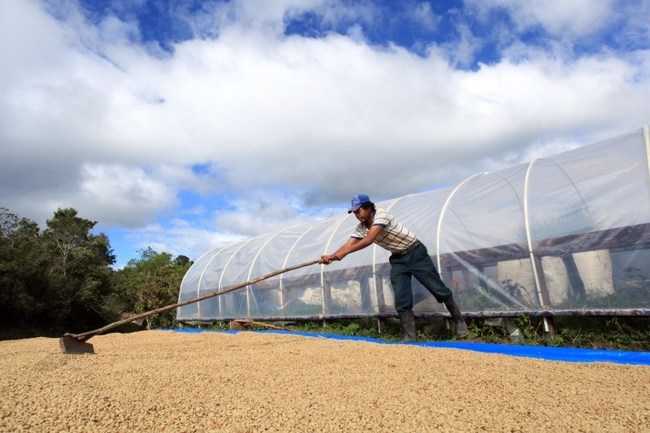TEGUCIGALPA, Honduras — Honduras, one the world’s leading coffee exporters and home to a multitude of award-winning coffee farms, is ready to welcome travelers this upcoming fall season when perfect weather and ideal coffee harvesting conditions collide in the country’s picturesque coffee regions.
The Honduran Coffee Route is a journey through six identified coffee regions that allows visitors to hear the success stories of local farmers and learn about their cultivating and roasting procedures while visiting farms, training centers, and research facilities in some of the country’s most beautiful destinations.
An initiative of the Honduras Institute of Coffee in collaboration with the Honduras Institute of Tourism, the Honduran Coffee Route is a must-see for coffee aficionados and travelers that are thirsty to learn more about one of the Central American country’s greatest exports.
“The variety of coffee regions within our country – from sea-level to high altitudes, from rich volcanic soils to fertile, humid grounds – provides a gateway for tourists to explore the unique corners of Honduras where coffee production plays a vital role in the area’s economy,” said Honduras Institute of Tourism’s Minister-Director Emilio Silvestri. “Our recently revamped coffee route combines coffee tastings and farm tours, adventure excursions and a variety of lodging options for international visitors to enjoy a comprehensive experience that highlights a taste of Honduran culture.”
Discover Honduras’ Coffee Landscape: Six Regions, Endless Flavors and Aromas
In western Honduras lies the department of Copán, home to the world-famous Maya ruins of Copán, one of the most spectacular cities of ancient Maya civilization. Considered one of the coolest coffee-producing regions in the country, it is located more than 3,280 feet above sea level and holds a wide range of humidity levels. Coffee from the Copán region boasts sweet hints of chocolate, caramel, oranges and a balanced round body.
The San Rafael coffee farm in Copán is famous for its farmstead coffee as it is never blended with coffee from other farms or producers. Beyond their exquisite seed-to-cup coffee production, San Rafael sells fine dairy products and specialty foods such as artisan cheeses. Finca Santa Alena, also in Copán, is a third-generation family farm stretching over 155 acres.
Opalaca, along with the region of Copán, are the two areas that form Honduran Western Coffee or HWC, which marks the coffee as derived from an important geographical indication highlighting its notable origin. In Opalaca, visitors will find a large variety of flavors in their cup such as tropical fruits, grapes, and berries, giving it a subtle sweetness balanced by a fine and delicate acidity. ESCAFE, the Institute of Coffee’s graduate school located in the department of Santa Barbara, is only a short drive from Opalaca. There is a total of six research facilities spread across the six coffee regions, but ESCAFE specializes in five distinct programs ranging from coffee tasting training to advanced business and farm management.
Founded in 2001, the COMSA farm in Montecillos is an association of organic coffee producers based in La Paz that strives to reduce poverty and promotes sustainable economic development in the region. They pride themselves on their organic beans because they avoid the use of farm chemicals, contain additional vitamins and minerals, and are fair trade compliant – all of which is explained in detail by expert tour guides. Montecillos holds the only designation of origin seal titled Marcala, the only of its kinds in Central America, and it is managed by a regulatory entity committed to carefully choosing the highest quality beans.
Towards the country’s interior lie Comayagua, El Paraiso and Agalta. At higher sea levels that reach over 5,500 feet, Comayagua and El Paraiso coffee has sweet and fruity fragrances while the coffee at Agalta is distinctly known for its chocolate and caramel undertones. The Institute of Coffee also has a research and training facility in El Paraiso that offers workshops where visitors can learn more about the coffee roasting and grinding process. There is also a “cupping lab” where students can taste coffee and spot the difference between a variety of brews.
Apart from national recognition, Honduras coffee growers have been awarded abroad thanks to the quality and taste of their crops. The Honduran grower José Abelardo Díaz Enamorado won the 2017 Ernesto Illy Coffee Awards in New York City and was recognized as the best of the best by multiple international culinary and coffee experts. The Alliance for Coffee Excellence awarded Oscar Ramirez with the 2017 Cup of Excellence award. His coffee broke the record for highest price ever earned at USD 124.50 per pound, and he now sells his beans to a renowned Japanese roaster.















